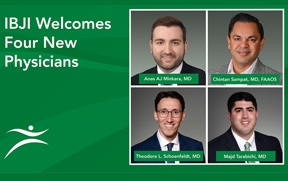If you, a family member or friend has been diagnosed with scoliosis, it important to understand the treatment options. Treatment for scoliosis isimportant and the goal is to prevent the curve from progressing and getting worse. Of course the treatment is dependent on your individual case, and what’s causing your scoliosis. Your age, sex and the severity of your curve all play a role in your treatment options. Your physician will be able to give you the best course of treatment, but typically there will be two types of treatment you can receive for scoliosis including non-surgical and surgical.
Non-Surgical Treatment Options for Scoliosis
Non- surgical treatment usually involves the use of a brace and regular routine visits with your physician. The purpose of a brace is to stop the curve from progressing, but the use of a brace does not cure scoliosis. The effectiveness of the brace is dependent your individual case and the length of time the brace is worn throughout the day. There are a few common types of braces:
Boston Brace
The Boston Brace is the most common brace and is also called the Thoraco-Lumbo-Sacral-Orthosis or “TLSO” brace. These braces are usually custom fit for your body and are slimmer and less cumbersome than the Milwaukee Brace.
Charleston Brace
The Charleston brace is the only worn at night and typically is recommend for curves that are between 20-30 degrees. This brace is also molded to conform to the body and “over corrects” the curve during sleep.
Milwaukee Brace
The Milwaukee brace is typically only used when the Boston Brace or underarm brace is not effective. The Milwaukee Brace is one of the first braces designed for scoliosis treatment.The brace is more cumbersome and is used less frequently as better form fitting braces have been developed since its inception.
Surgical Treatment for Scoliosis
The most common type of scoliosis surgery is called spinal fusion and this surgery is usually only recommended if scoliosis is severe and other options such as braces were not effective. The surgery aims to correct the curvature of the spine and the surgeon will use a spinal fusion to the hold the spine in place.
Scoliosis treatment is dependent on many factors including your age, sex and the severity of your curvature. The good news is there are options to treat scoliosis ranging from braces to surgery, however routine visits with your physician are important as your physician will decide with you what’s the best course of action. The orthopedic physicians at the Illinois Bone and Joint institute can help you cope and treat your scoliosis.
*This content is for information only and is not intended to replace the diagnosis, treatment, or medical advice from your treating healthcare professionals. The content does not provide medical advice, does not constitute the practice of medicine or other healthcare professional services, and does not create a doctor-patient relationship. You should not rely on this information as a substitute, nor does it replace professional medical advice, diagnosis, or treatment. If you have concerns or questions, seek the advice of your healthcare professionals. If you think you may have a medical emergency, call your doctor or 911 immediately. Do not rely on electronic communications or communicate through this website for immediate, urgent medical needs. This website is not designed to facilitate medical emergencies. The use of the information is at the reader’s own risk. The links are provided for information and convenience only. We cannot accept responsibility for the sites linked or the information found here. A link does not imply an endorsement of a site.





